Art History
What to Know About the Greek Discobolus, a Hallmark of the Ancient Olympics
Marking the return of the Summer Olympic Games, we took a closer look at one of the oldest and most iconic depictions of an Olympic sport.
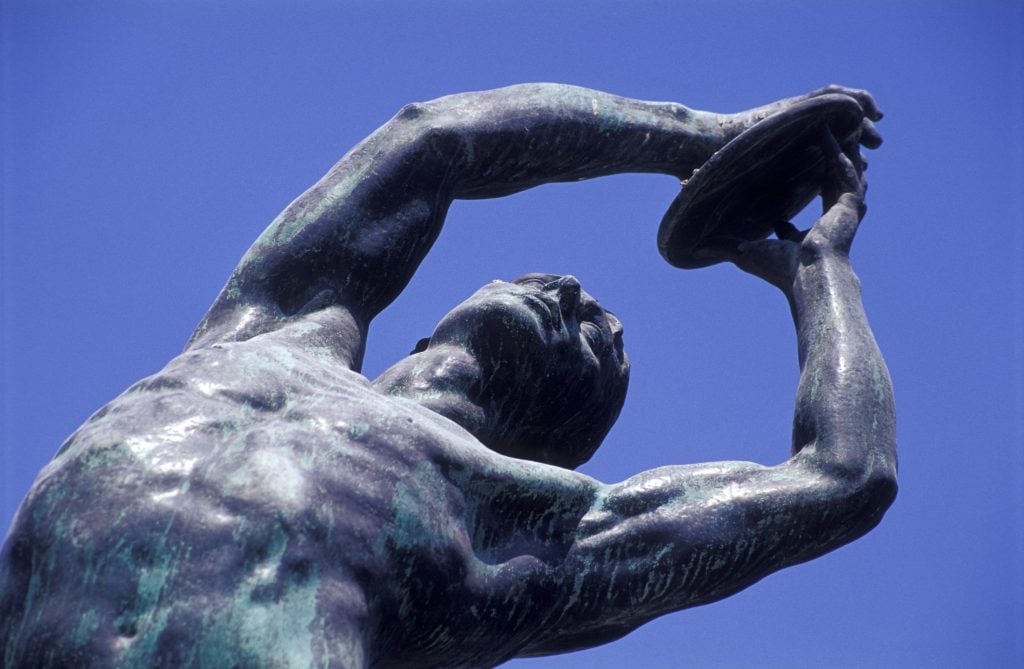
The discus throw event has been included in every modern Olympics since its inaugural 1896 edition held in Athens (where Robert Garrett representing the United States won the gold medal), and can be traced to even the beginnings of the Ancient Olympic games nearly 2,800 years ago. Within the lexicon of Classical Greek art, the Discobolus, commonly referred to as the “Discus Thrower,” stands as one of the most internationally recognizable visual representation of the Olympics event.
The work was first created in bronze by Athenian sculptor Myron of Eleutherae between roughly 460 and 450 B.C.E., and though the original Discobolus has been lost, it has still reached audiences worldwide through the ages by the numerous subsequent copies made by the Romans—though these copies were predominantly made in marble as it was less expensive than bronze. While copies of the Discobolus can be found worldwide, the most notable are within the collections of the Museo Nazionale Romano in Rome and the British Museum, London.
In the work, a nude athlete is shown at the moment of peak tension before throwing a disc that, in the sport at the time the original sculpture was created, was likely made of stone, iron, bronze, or lead; for comparison, the discus used in the sport today are typically made of wood, plastic, or fiberglass with a metallic rim.
By modern standards of the game, the Discus Thrower’s stance is considered awkward and inefficient, even contrived, for optimal performance—as works of this nature were typically made to exemplify athletic perfection and excellence. A few theories to explain this have ranged from artistic liberty on the part of Myron to differences in game rules or norms, for instance, if it was a standing (rather than rotating) discus throw.
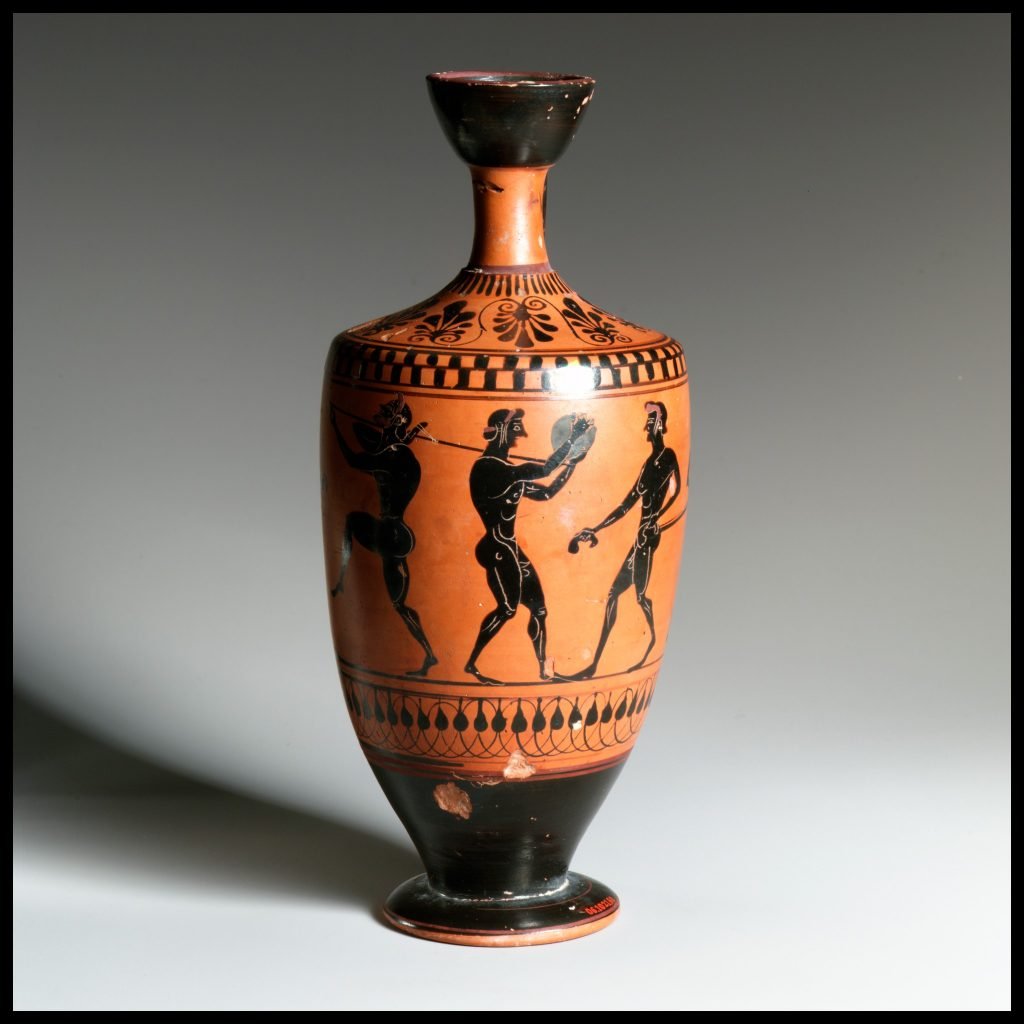
Attributed to painter associated with Michigan Class, Terracotta lekythos (oil flask) (ca. 6th century B.C.E.). Collection of the Metropolitan Museum of Art, New York.
A popular game in Ancient Greece and one of the core events within the Ancient Olympic Games (which trace back to the 7th century B.C.E.), the discus thrower motif was a common one within the realm of Ancient Greek art and artifacts, found on everything from pottery and sculpture to mosaics and frescoes. Myron’s Discobolus, however, stands apart for its exemplary dynamism and scale.
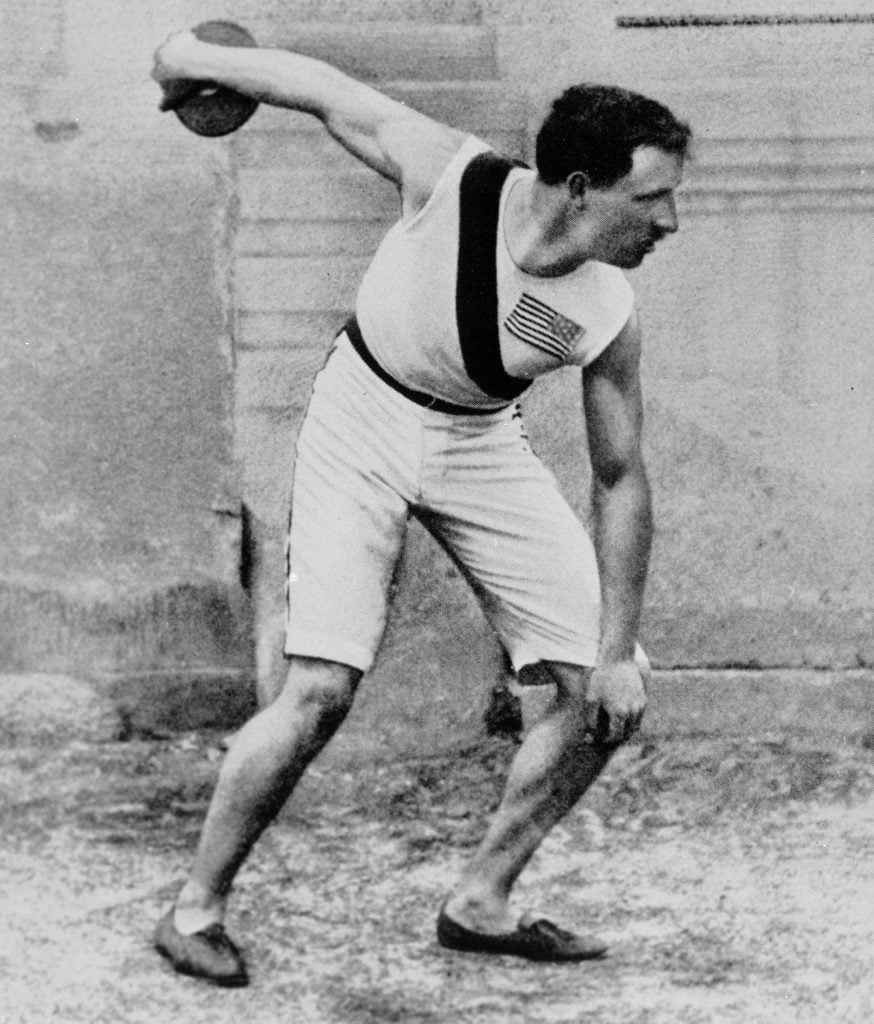
Robert Garrett (USA) wins the gold in the discus at the 1896 Athens Olympics.
Marking the opening of the 2024 Summer Olympic Games this month in Paris, France, and the discus throw that will be part of the track and field events, we did some digging on the Discobolus and discovered three interesting things about it you should know.
Which way is the discus thrower looking?
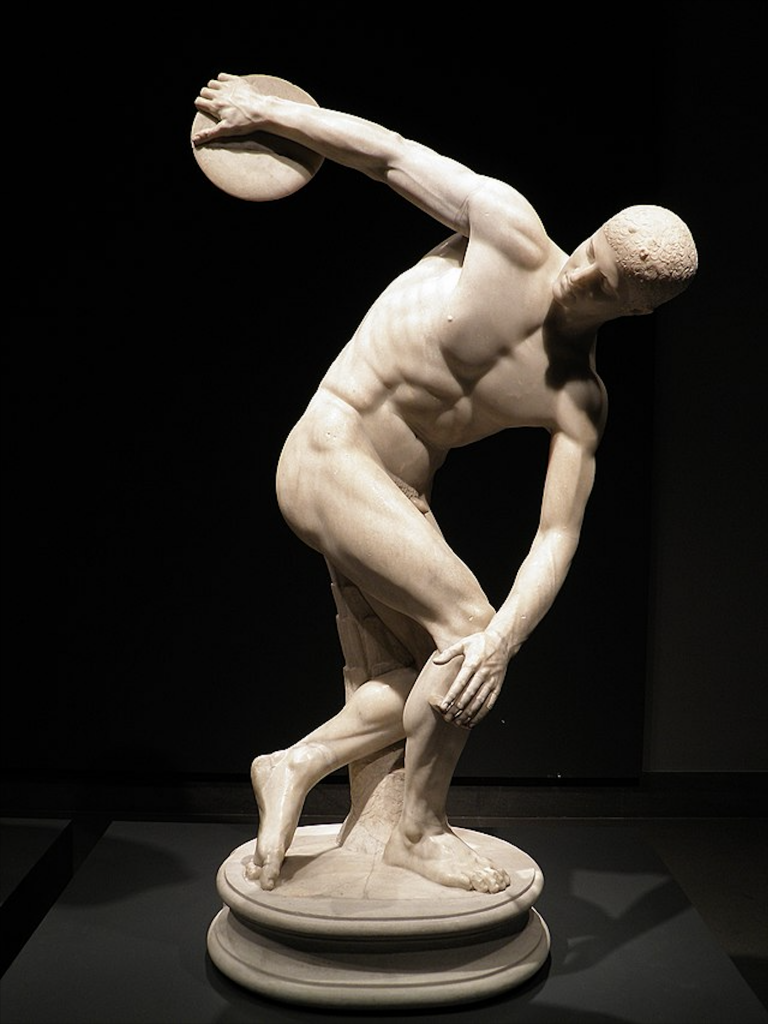
Discobolus Lancellotti, (2 C.E. Roman copy of Greek bronze by Myron ca. 450 B.C.E.) Collection of the Palazzo Massimo alle Terme, Rome.
If you’ve ever seen a depiction or reproduction of the Discobolus and thought you remembered the figure’s head turned the other way, it’s not the Mandela Effect or poor memory. The reality is that the two most well-known versions of the work are, in fact, each looking in different directions.
The first reproduction of Myron’s Discobolus was discovered in 1781 at the Villa Palombara on the Esquiline Hill in Rome, which was owned by the Massimo family. Dated to around the 2nd century C.E., the piece was restored and installed at the Palazzo Massimo alle Colonne and even though access to it was highly guarded, it quickly became an international sensation. Referred to as the Discobolus Palombara or Discobolus Lancellotti, and currently part of the National Museum of Rome collection in Rome, the piece features the discus thrower in his tightly wound stance with his head and gaze turned back towards the outstretched arm and discus.
Only a few years later, a second Roman copy of the Discobolus was found in 1790 at Hadrian’s Villa in Tivoli, just outside of the Italian capital. The year following its unearthing, it was purchased at auction by a man named Thomas Jenkins, a British painter, art dealer, and antiquarian. It was restored by Italian sculptor and notable restorer Carlo Albacini before being offered for sale again and bought by Charles Townley, a British “country gentleman” and collector of antiquities.
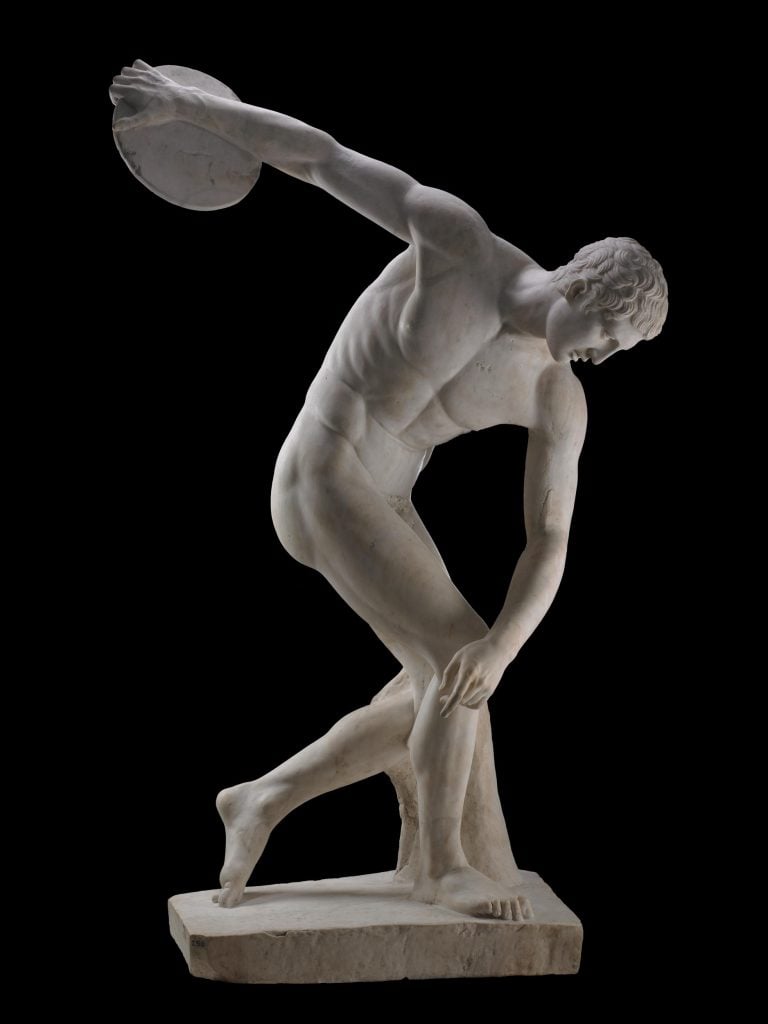
Townley Discobolus, (2 C.E. Roman copy of Greek bronze by Myron ca. 450 B.C.E.). Collection of the British Museum, London.
Jenkins described to Townley that this second Discobolus rivaled that of the Massimo family, which had garnered widespread fame at this point. According to Jenkins, the piece was found with its head broken off (extremely common in the realm of Classical Greek sculpture) but when it was excavated, the head emerged next to the sculpture’s torso—assuaging any concern over authenticity, in a turn of luck for Jenkins.
When Townley received the piece in London, he had new concerns with its condition, and wrote to Jenkins asking about the orientation of the head, as it was not the same as the example owned by the Massimos; here is where the history of that second work goes a little awry.
In response, Jenkin’s deferred to papal antiquarian Ennio Quirino Visconti who claimed that the iteration in Townley’s possession was merely an improved upon version of Myron’s original, and that the Massimo family’s Discobolus was “forced and certainly disgusting to the sight.” When yet another headless version was found at Hadrian’s Villa, Visconti acquired the piece for the Vatican’s collection and had it restored based on Townley’s version that he authenticated, with the athlete looking forward and away from the discus, and instead simply chose not to authenticate the Massimo Family’s collection piece.
Today, it is generally agreed that the head affixed to the Townley torso is not original to the piece, but it is regardless an exemplary work of Classical artistry and craftsmanship.
The Discobolus reflects a major trend in Ancient Greek art
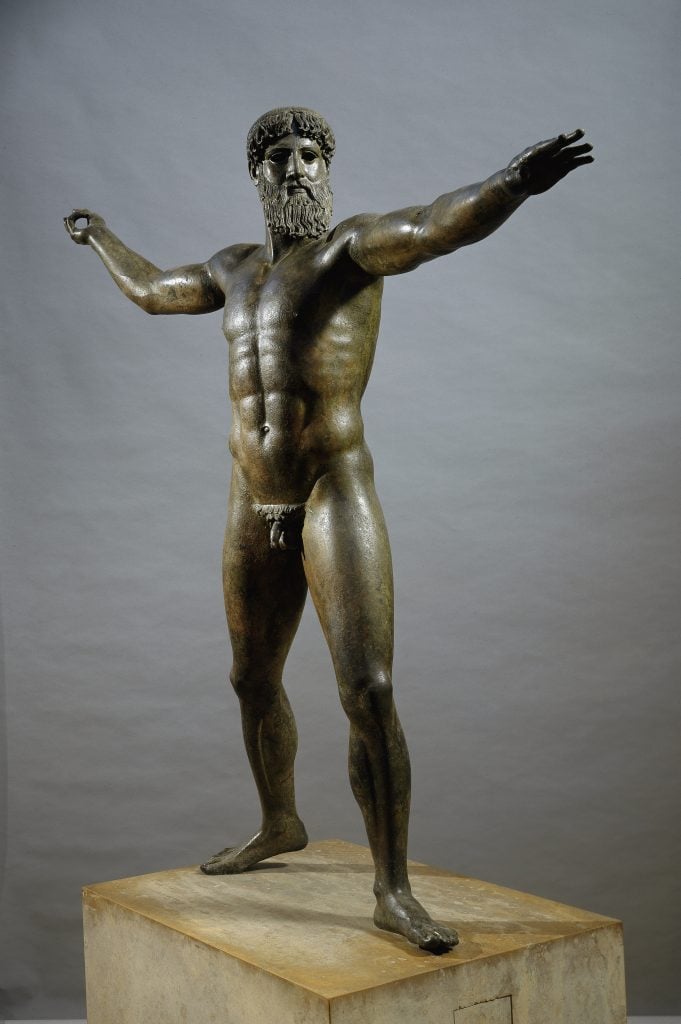
Poseidon or Zeus bronze sculpture, also known as the Artemision Bronze, by Kalamis (480-460 B.C.E.). Collection of the National Archaeological Museum, Athens, Greece (Photo by Leemage/Corbis via Getty Images)
While today the Olympic Games are a moment of international amity and a celebration of sportsmanship and athleticism, for the Ancient Greeks the Olympics were an integral facet of culture and religion. Held in honor of Zeus and believed to have mythological origins, the happened every four years—as they are in modern times—beginning in at least 776 B.C.E. to 393 C.E. and saw athletes representing their respective city-states at the Panhellenic religious sanctuary of Olympia in Western Greece.
At the time Myron created the bronze Discobolus, Greece was experiencing a pinnacle of artistic, cultural, and athletic success and is considered by historians to be one of the most prosperous periods and places in the ancient world. Against this backdrop, Myron infused into his work cultural ideals, sometimes referred to as kalos kagathos; in Greek, kalos denotes something good or beautiful and agathos is loosely defined as ethical, virtuous, or kind. It was not enough to be an excellent athlete, successful businessperson, or virtuous person, but instead to strive to be a well-rounded individual—body and mind.
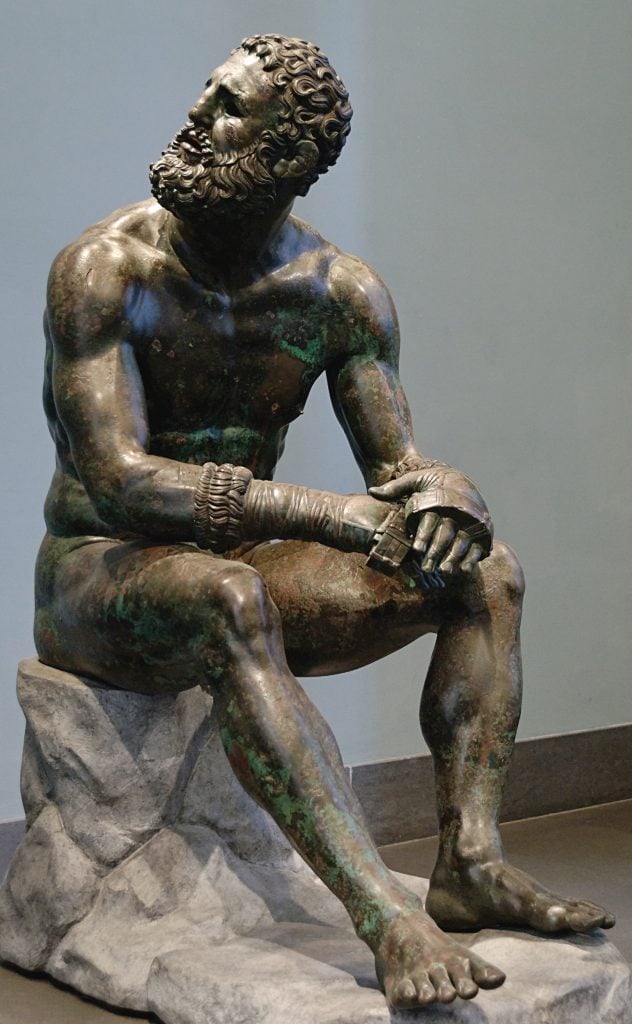
Boxer at Rest, also known as Terme Boxer (330–50 B.C.E.) Collection of the Museo Nazionale Romano, Rome, Italy. Photo by VCG Wilson/Corbis via Getty Images.
The depiction of the discus thrower in Discobolos is an exemplary example of this ethos. Featuring the idealized body of an athlete, the figure’s face is remarkably serene and unphased in spite of a depicted moment of utmost tension and strain. As truly representational as the work is, one might expect a furrowed brow or clenched jaw, but the visage is instead one of calmness and tranquility, suggesting a well-balanced mind in addition to physical prowess.
The trend can be seen in other largely contemporaneous works, such as the Artemision Bronze (480–460 B.C.E.) thought to be a depiction of either Zeus or Poseidon, presently housed within the National Archaeological Museum of Athens. The object that the figure at one time held in his right hand (it has been lost) may have been a lightning bolt or trident (depending on which god it actually is), and the pose is undoubtedly drawn from that of a javelin thrower, another event that was present at the Ancient Olympic Games since the beginning. Capturing the exact moment before the throw, the figure’s body and expression maintain a preternatural level of stillness and poise.
Interestingly, in later centuries this preference for ultimate composure and physical perfection shifted towards one of realism, as can be seen in the Hellenistic bronze sculpture known as the Boxer at Rest (329 B.C.E.), held in the Palazzo Massimo alle Terme, Rome. Unlike previous Classical works, here signs of the wear and tear caused by sport are reflected with meticulous detail: cauliflower ears, broken nose, and cuts across his face. The figure is even rendered with Morton’s toe, a condition where the big toe is shorter than the rest.
It is now a perennial symbol of the modern Olympics
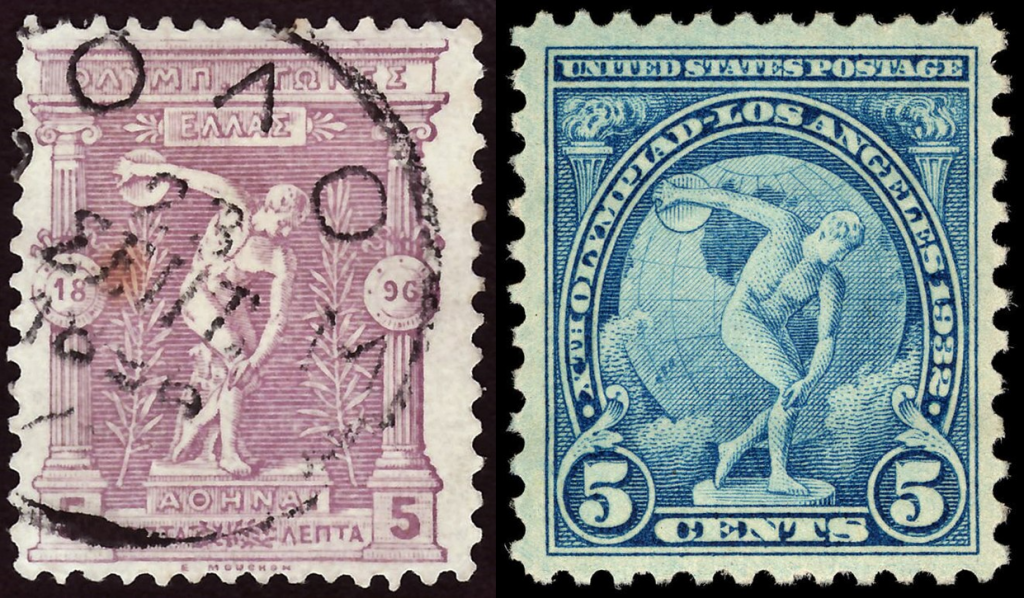
Olympic games commemorative stamps. Left: Inaugural 1896 Summer Olympics in Athens, Greece. Right: 1932 Summer Olympics in Los Angeles, California.
Despite its Ancient origins, the Discobolus continues to be recognized and beloved today, and more than a thousand years after its inception, it continues to be used as a symbol of the Olympic Games and athletics. Beginning with the first modern Olympics in 1896 when the discus thrower was featured on an Olympic Games commemorative stamp in Greece, the composition has cropped up on everything from stamps and postcards to currency, guidebooks, posters, and more, irrespective of where in the world the games are held.
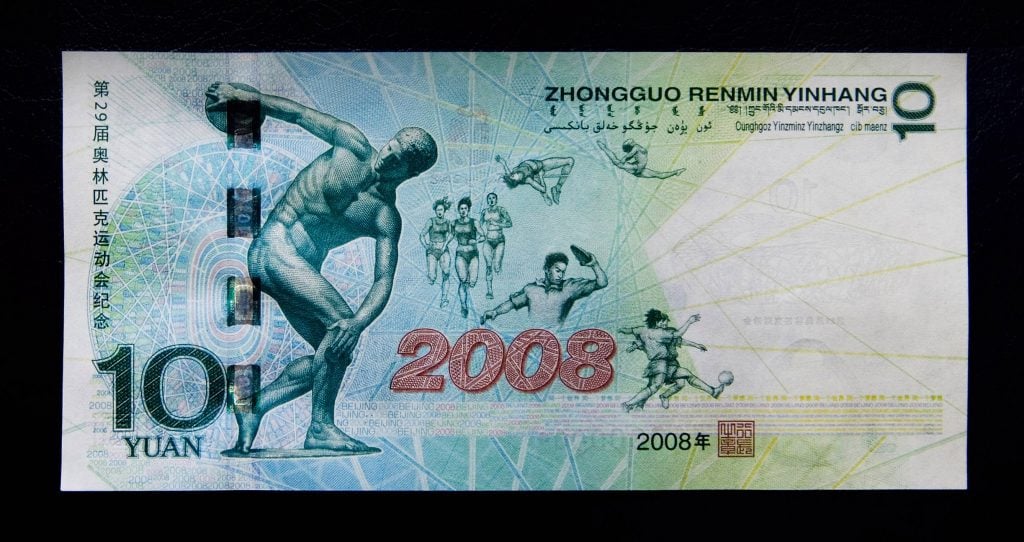
Commemorative 10-yuan bank note issued by the People’s Bank of China (PBOC) to mark the 2008 Beijing Olympic Games. Photo: Feng Li/Getty Images.
Intriguingly, though perhaps unwittingly, the previously described discrepancy between the Townley Discobolus and the Lancellotti Discobolus endures through the recurrent use of the motif on these Olympic-related ephemera and memorabilia. While, for example, the 1932 Los Angeles Olympic Games’s commemorative stamp features the Townley configuration with the figure looking forward, the special edition of the 10-yuan bank note commissioned on the occasion of the 2008 Beijing Olympic Games features the Lancellotti version looking back at the discus.
Regardless of its precise composition, the Discobolus is a testament to the enduring achievement of Classical Greek art, and promises to be a stalwart symbol of the Olympic Games for centuries to come.





